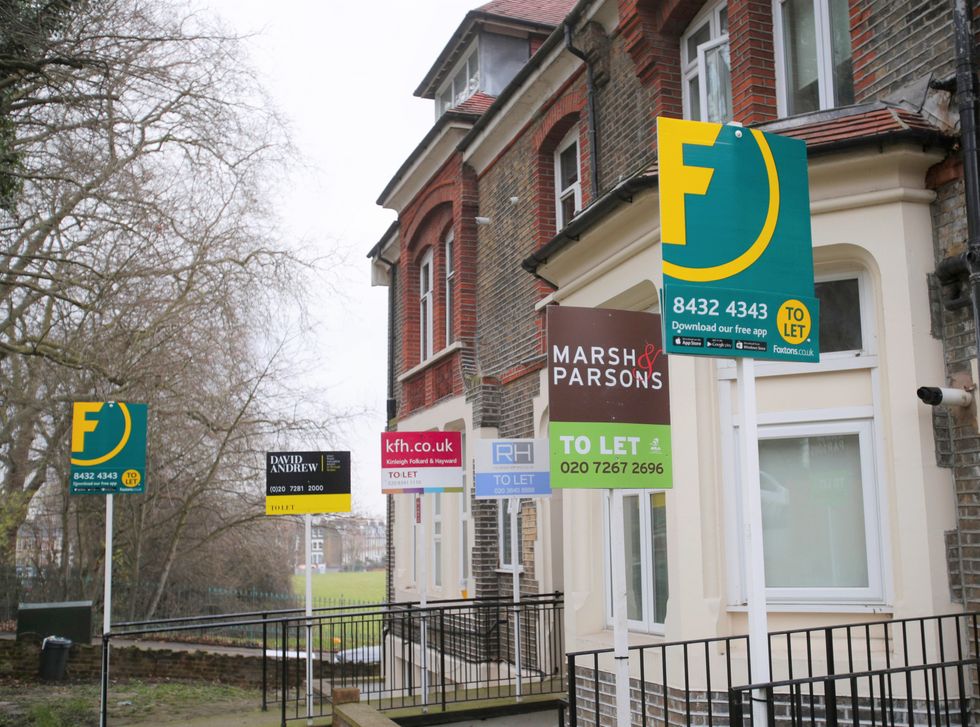House prices have increased a lot in some parts of the country
PA
House prices are up across the UK, according to the latest Zoopla House Price Index
Don't Miss
Most Read
Trending on GB News
The UK housing market is experiencing a notable upturn, with house price inflation rising to one per cent in September 2024, a significant improvement from the -0.9 per cent recorded a year ago.
This positive trend is accompanied by a surge in sales activity, with the pipeline of agreed sales 30 per cent higher than the previous year, totalling £113billion. And some parts of the UK have faired better than others.
The market is witnessing its busiest period since the 2020 boom, driven by intense competition among lenders that has pushed average mortgage rates to their lowest in two years.
Despite the increase in house prices, the growth remains modest due to a large supply of homes for sale and ongoing affordability pressures. The market is particularly buoyant in regions with more affordable housing, while some areas are experiencing small price declines.

Northern Ireland has had the biggest increase
PAThe regions experiencing the highest house price increases in the UK are:
- Northern Ireland: 5.5% increase, average price £179,100
- Manchester: 2.8% increase, average price £228,200
- Glasgow: 2.4% increase, average price £150,800
- Liverpool: 2.4% increase, average price £160,900
- Leeds: 2.0% increase, average price £211,500
- Birmingham: 1.9% increase, average price £212,100
- Cardiff: 1.8% increase, average price £256,700
- Newcastle: 1.8% increase, average price £155,800
These areas, predominantly in the North and Midlands, are outpacing the national average of one per cent growth.
In contrast, the Eastern and South East regions are experiencing small price falls of -0.3 per cent and -0.1 per cent respectively.
London's Euro Region saw a modest 0.6 per cent increase, with average prices at £537,500. Several factors are driving the current market trends. Lower mortgage rates, reaching their lowest point in two years, have made homeownership more accessible.
This has particularly benefited first-time buyers, who now constitute the largest buyer group, accounting for 36 per cent of sales in 2024.
The shift in the renting versus buying dynamic has been influenced by rapid growth in rents and declining mortgage rates. This has encouraged more first-time buyers to enter the market.
Despite the positive momentum, house price inflation remains in check due to a high supply of homes for sale and ongoing affordability pressures.
The market is showing resilience, with UK house prices projected to be two per cent higher over 2024. The current climate of increased sales activity and modest price growth reflects a delicate balance between improved affordability and economic constraints.
LATEST DEVELOPMENTS

The UK housing market's current trajectory suggests a period of steady growth and increased activity
GETTYOverall market outlook remains look, according to the data. With sales activity at its highest level since the 2020 boom and a pipeline of sales agreed 30 per cent higher than a year ago, the housing market appears robust.
The UK housing market's current trajectory suggests a period of steady growth and increased activity.
While regional variations persist, with Northern Ireland and northern cities leading in price increases, the overall trend is positive. First-time buyers are playing a crucial role, supported by lower mortgage rates and shifting rent dynamics.








